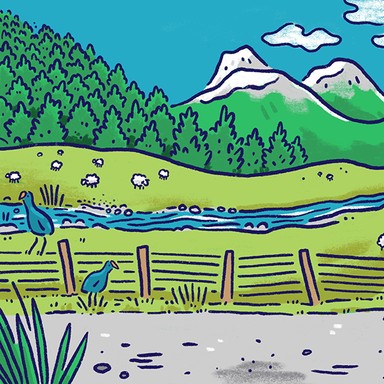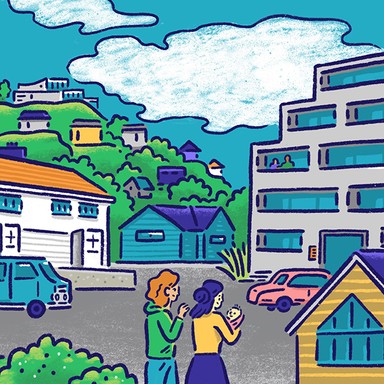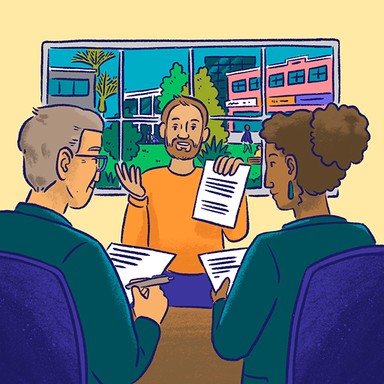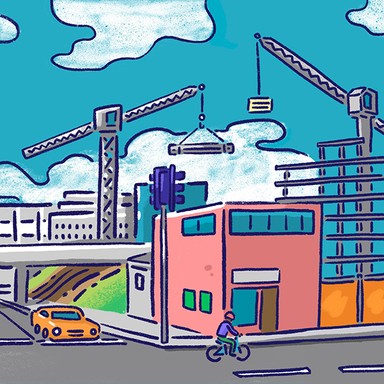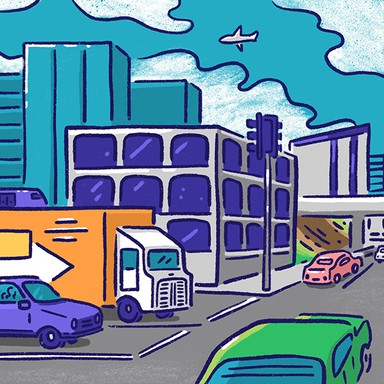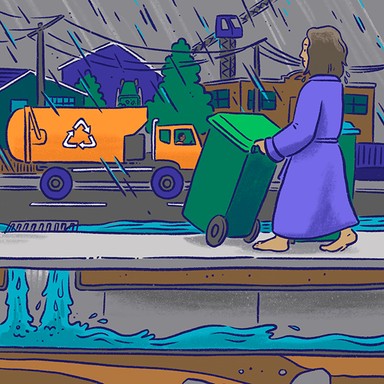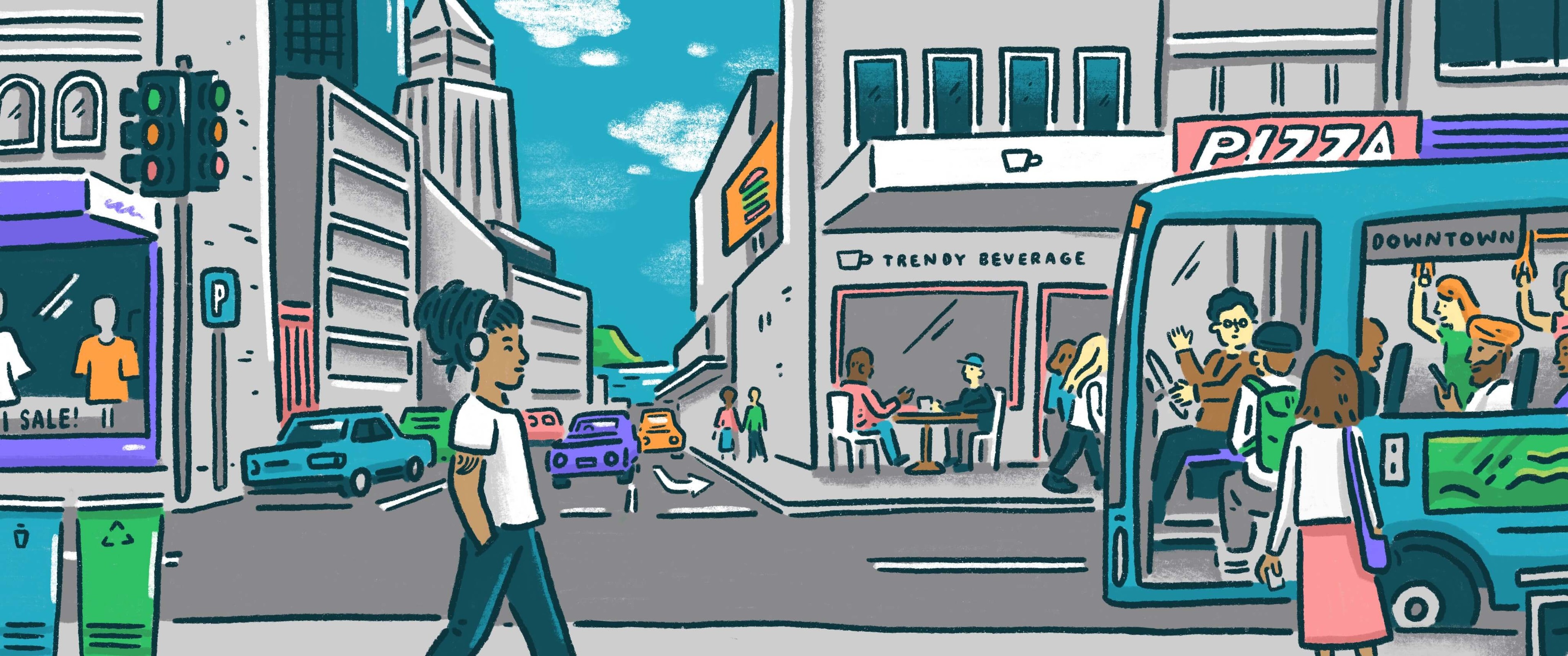
Hamilton City Council

Climate change and resilience
Climate change poses a huge challenge for communities as more frequent extreme weather events require us to rethink how we live and where. Local authorities are at the forefront of efforts to respond, with responsibilities for environmental planning and regulation, as well as civil defence. Many councils have plans to reduce emissions in their area and are working to help their communities adapt to a warming world.

Climate change and resilience
Climate change poses a huge challenge for communities as more frequent extreme weather events require us to rethink how we live and where. Local authorities are at the forefront of efforts to respond, with responsibilities for environmental planning and regulation, as well as civil defence. Many councils have plans to reduce emissions in their area and are working to help their communities adapt to a warming world.
Commit to council being carbon neutral by 2030.
Work to convert council vehicle fleet to electric vehicles or hybrids and encourage alternate forms of transport for staff.
Develop plans for increased extremes of weather events, especially drought and flooding.
Reduce greenhouse gas emissions through multi-modal transport design that includes park and ride and public transport options for school children.
Promote Three Waters innovative design through 'think local' solutions.
Where properties are built using current legislation and not common sense, promote changes to the legislation.
Commit to expanding on the low emission transport infrastructure initiative.
Embed Te Ao Māori worldview in progressing the climate change strategy.
Enable development of infrastructure around neighbourhoods to meet most of resident's daily needs within a short distance from home.
Commit to more planting of trees in the gullies and green spaces around Hamilton.
Ensure we have good alternative transport accessible to everyone. This can include cycleways and buses.
Commit to changes in the development plans that prevents stormwater runoff to add to our overburdened stormwater system.
Work with Waikato Regional Council to increase the number and frequency of buses running on main school routes at start/finish times to reduce congestion and emissions.
Review council operations to ensure Hamilton City Council is doing its part, eg phasing out petrol vehicles in fleet and replacing with electric/hybrid.
Upgrade and maintain ageing stormwater infrastructure to reduce flash flooding during weather events.
Everyone come together to work with iwi and hapū to commit to zero carbon emissions by 2025. Replace petrol cars with electric vehicles.
Recycle rubbish and pop in correct bins, reducing food scraps, providing bigger rubbish bins for large families.
Earthquake strengthening. Build homes to stand up to climate change and disasters. Build better affordable homes.
Review storm water systems. Urban water bodies are at risk from flooding, water quality degraded by storm water to flowing into rivers.
Review ongoing policies instigated by current council for their effectiveness.
Seek guidance by experts in this field.
Promote low carbon transport choices.
Promote policies that make it easy for residents to participate in climate change actions. Like recycling, cheap fast and frequent public transport.
Plant more trees in our streets, gullies, parks and riverbank.
Reduce greenhouse gas emissions by creating greenbelt areas, supporting the use of electric cars, teaching youth to be carers of creation.
Adapting to climate change by promoting micro transportation, encouraging cycling, walking, busing and carpooling, with everyone playing their part.
Train first response civil defence workers who know how to deal with floods, fires, earthquakes and accidents involving police, army etc.
Develop an adaptation strategy plan that applies to Hamilton.
Require all construction agreements in Hamilton to commit to a green strategy.
Assist vulnerable communities to adjust to low carbon living through a range of measures, including energy efficiency and public transport.
Invest in infrastructure and community action that keeps carbon emissions reductions inline with international climate accords.
Future-proof existing and new infrastructure to be climate resilient, prioritising the protection of more vulnerable communities.
Support active transport infrastructure.
Commit to the development of community hubs cutting down the need for cross-city travel.
Commit to a car-free city by 2050.
Committed to embedding climate change impacts in Council decision-making, new business cases, and new projects.
Commit to future proofing by weaving climate change and Kaitiaki principles throughout new council policies, plans and developments.
Support infrastructure planning to enable safe and accessible multi-modal forms of transport for all.
Enable and encourage community action to identify and lead solutions to climate change action and education.
Commit to council being carbon neutral by 2030.
Work to convert council vehicle fleet to electric vehicles or hybrids and encourage alternate forms of transport for staff.
Develop plans for increased extremes of weather events, especially drought and flooding.
Reduce greenhouse gas emissions through multi-modal transport design that includes park and ride and public transport options for school children.
Promote Three Waters innovative design through 'think local' solutions.
Where properties are built using current legislation and not common sense, promote changes to the legislation.
Commit to expanding on the low emission transport infrastructure initiative.
Embed Te Ao Māori worldview in progressing the climate change strategy.
Enable development of infrastructure around neighbourhoods to meet most of resident's daily needs within a short distance from home.
Commit to more planting of trees in the gullies and green spaces around Hamilton.
Ensure we have good alternative transport accessible to everyone. This can include cycleways and buses.
Commit to changes in the development plans that prevents stormwater runoff to add to our overburdened stormwater system.
Work with Waikato Regional Council to increase the number and frequency of buses running on main school routes at start/finish times to reduce congestion and emissions.
Review council operations to ensure Hamilton City Council is doing its part, eg phasing out petrol vehicles in fleet and replacing with electric/hybrid.
Upgrade and maintain ageing stormwater infrastructure to reduce flash flooding during weather events.
Everyone come together to work with iwi and hapū to commit to zero carbon emissions by 2025. Replace petrol cars with electric vehicles.
Recycle rubbish and pop in correct bins, reducing food scraps, providing bigger rubbish bins for large families.
Earthquake strengthening. Build homes to stand up to climate change and disasters. Build better affordable homes.
Review storm water systems. Urban water bodies are at risk from flooding, water quality degraded by storm water to flowing into rivers.
Review ongoing policies instigated by current council for their effectiveness.
Seek guidance by experts in this field.
Promote low carbon transport choices.
Promote policies that make it easy for residents to participate in climate change actions. Like recycling, cheap fast and frequent public transport.
Plant more trees in our streets, gullies, parks and riverbank.
Reduce greenhouse gas emissions by creating greenbelt areas, supporting the use of electric cars, teaching youth to be carers of creation.
Adapting to climate change by promoting micro transportation, encouraging cycling, walking, busing and carpooling, with everyone playing their part.
Train first response civil defence workers who know how to deal with floods, fires, earthquakes and accidents involving police, army etc.
Develop an adaptation strategy plan that applies to Hamilton.
Require all construction agreements in Hamilton to commit to a green strategy.
Assist vulnerable communities to adjust to low carbon living through a range of measures, including energy efficiency and public transport.
Invest in infrastructure and community action that keeps carbon emissions reductions inline with international climate accords.
Future-proof existing and new infrastructure to be climate resilient, prioritising the protection of more vulnerable communities.
Support active transport infrastructure.
Commit to the development of community hubs cutting down the need for cross-city travel.
Commit to a car-free city by 2050.
Committed to embedding climate change impacts in Council decision-making, new business cases, and new projects.
Commit to future proofing by weaving climate change and Kaitiaki principles throughout new council policies, plans and developments.
Support infrastructure planning to enable safe and accessible multi-modal forms of transport for all.
Enable and encourage community action to identify and lead solutions to climate change action and education.
Mayor
Compare the mayoral candidates in your area
Local council
Compare the candidates for your city or district council
Regional council
Compare the candidates for your regional council
Local board
Compare the candidates for your local or community board
